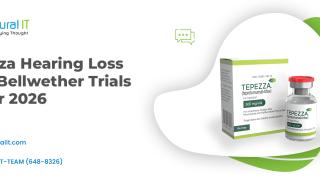Paraquat dichloride, commonly referred to as “Paraquat is a toxic chemical and is one of the most commonly used herbicides in the world. It is also known as Gramoxone. Paraquat has been in the market since 1961 post its discovery in 1955. It is highly popular among commercial farmers due to its effectiveness in killing unwanted weeds and grass. Licensed applicators are only allowed access to Paraquat as the US Environmental Protection Agency has classified it as a “restricted use.” Syngenta and Chevron USA are the manufacturers.
In 2016, EPA proposed new packaging requirements to minimize accidental Paraquat ingestion and to reduce exposure to workers who mix, load, and apply Paraquat. EPA in the 2019 draft Human Health Risk Assessment found Paraquat has no dietary risks of concern when it is used according to the label instructions. Research studies were conducted that reported an exposure to Paraquat increases the risk of Parkinson's disease (PD), and it is associated with several other health issues and risk of death but EPA reapproved Paraquat on October 23 2020 for use in the United States; this was a routine review done every 15 years by EPA for all herbicides and pesticides.
In 2009, it was published in the American Journal of Epidemiologyany exposure to Paraquat within 1,600 feet of a home-generated a raised risk of Parkinson's disease up to 75 percent. In 2011, the Environmental Health Perspectives journal in association with the National Institute of Environmental Health Sciences published results from a study of Parkinson's disease cases and pesticides in which Paraquat had emerged as a significant concern.
Parkinson's disease was connected to groups of pesticides that block mitochondrial complexes and those that cause oxidative stress. The way Paraquat works is to produce intracellular molecules that damage cells by causing oxidative stress. The study concluded that “Parkinson's disease was strongly associated with” Paraquat. The usage of Paraquat has been banned in countries like Switzerland and the EU nations due to its high level of toxicity but it is still used widely in the United States on the contrary its use is increasing due to crops' resistance to other kinds of pesticides.
Paraquat can be easily mixed with food, water, or other beverages. If the type of paraquat used does not contain protective additives (dye, fragrance, and cleaning agent), people may not know that food, water, or other beverages are contaminated. Eating or drinking food or drinks contaminated with paraquat can kill people. Paraquat toxicity can also occur after skin exposure. Toxicity may occur if skin exposure is prolonged, including a concentrated version of paraquat, or occurs on sensitive skin (skin with wounds, cuts, or severe rashes). When inhaled, paraquat can cause toxicity leading to lung damage. In the past, some marijuana in the United States has been found to contain paraquat. Licensed paraquat users are people at high risk of exposure.
The level of toxins produced by paraquat depends on the quantity, route, and time of exposure and the state of health of the person at the time of exposure. Paraquat causes direct damage when it comes in contact with the lining of the mouth, stomach or intestines. After paraquat enters the body, it is distributed throughout the body. Paraquat causes the formation of toxic chemicals that occur in many parts of the body, especially the lungs, liver and kidneys. The lung cells select paraquat for active transport.
After a person has applied a large amount of paraquat, they are more likely to have pain and swelling of the mouth and throat. The following symptoms of illness after ingestion are symptoms of an upset stomach (digestive tract), such as vomiting, vomiting, abdominal pain, and diarrhea (possibly blood). Severe intestinal symptoms can cause dehydration (dehydration), electrolyte imbalance (insufficient sodium and potassium in the body), and low blood pressure.
If a person survives the toxic effects of paraquat poisoning, chronic lung damage (scarring) is more likely. Other long-term side effects can also occur, including kidney failure, heart failure, and stiffness (cuts of the swallowing tube that make it difficult for a person to swallow). People with large paraquat imports are unlikely to survive.
Because ingestion can be a major means of exposure, if it is suspected that toxins can be used, avoid further infiltration and seek medical help immediately. Pre-hospital treatment may include oral administration of activated charcoal or Fuller land to bind paraffat implants. If you think you may have been exposed to liquid paraquat on your clothes or body, take off your clothes, wash your whole body quickly with soap and water, and get medical attention as soon as possible.
Quickly remove clothing with liquid paraquat. Any clothing that is to be pulled over the head should be cut off from the body instead of being pulled over the head. When helping other people take off their clothes, try to avoid touching any contaminated areas, and remove clothing as soon as possible.
As soon as possible, wash any liquid paraquat on your skin with plenty of soap and water. Bathing with soap and water will help to protect people from any chemicals in their body. If your eyes are burning or your vision is blurred, rinse your eyes with clear water for 10 to 15 minutes. When you put on your contacts, remove them and replace them with dirty clothes. Do not put your contacts back in your eyes (even if they are not your discarded contacts). When wearing eyeglasses, wash them with soap and water. You can put on your eyeglasses after washing them.
Starting treatment comprises of eliminating the paraquat from the body (sterilization) and forestalling further retention for oral openings by utilizing enacted charcoal or Fuller's earth. Nasogastric pull might be considered for ingestions that present within 60 minutes. Strong consideration estimates like intravenous (liquids given through a needle embedded straightforwardly into a vein), prescriptions to assist with breathing and to raise low circulatory strain, a ventilator to help breathing, and potentially dialysis for kidney disappointment ought to be given. Organization of unnecessary oxygen ought to be stayed away from in light of the fact that it might demolish paraquat harmfulness. No demonstrated cure or fix exists for paraquat harming.
The Paraquat Lawsuits charge that the makers of Paraquat neglected to caution the public that Paraquat could cause Parkinson's Disease and that their items are imperfect in plan. In one of the principal claims documented identified with Paraquat, James Hemker recorded a claim against Syngenta and Chevron in February 2021 against Syngenta and Chevron dependent on the way that Paraquat had no admonitions that openness could prompt neurological harm.
As of late, preliminary attorneys addressing a developing number of individuals determined to have Parkinson's Disease after openness to the herbicide Paraquat have documented a Motion to Transfer and Consolidate their cases under a solitary government court. As of early April 2021, the quantity of government claims had developed to in excess of 20 cases. Simultaneously, other Federal Courts have started controlling on protection Motion's to Dismiss while other State cases could be made a beeline for preliminary soon.
The Motion to Transfer the cases was recorded on April seventh, 2021 and oral contentions over combination of Paraquat Parkinson's Lawsuits has been set for May 27th under the steady gaze of a board of judges. Whenever supported, a Paraquat MDL would concentrate cases recorded all through the government court framework before one U.S. Area Judge to keep away from duplicative revelation into regular issues in the cases, try not to struggle pre-preliminary decisions from various courts and serve the comfort of basic gatherings, witnesses, and the legal framework. As more people find that their analysis might be the consequence of Paraquat openness, it is normal that hundreds or thousands of extra cases will be documented in the coming months and years. It is likewise expected, just like the case with any MDL, that a progression of early experiments will probably go to preliminary to help the gatherings check how juries are probably going to respond to confirm identified with Paraquat, the inability to caution claims, and the logical connection among Paraquat and Parkinson's Disease.
One of the principal cases going to preliminary includes a Paraquat Lawsuit documented in a state court is booked to go to preliminary on May tenth, 2021. The case, Hoffman V. Syngenta, is scheduled for preliminary May 10 in St. Clair County Circuit Court in Illinois. A status gathering is planned for the finish of April. The legal advisor addressing the Plaintiff Hoffman, Missouri legal counselor Steve Tillery, has expressed that regardless of Syngenta's statements unexpectedly, he has aggregated proof that incorporates interior organization records showing Syngenta has known for quite a long time that its item causes Parkinson's Disease.
News:
Friday, Jun 11, 2021: Paraquat Lawsuits To Be Centralized In Illinois District Court
A panel of federal judges announced to centralize all pretrial proceedings of nearly 80 paraquat lawsuits with similar allegations like Roundup litigation in the U.S. District Court for the Southern District of Illinois.
Paraquat is banned in many countries but is still sold on the U.S. market with restrictions that mandate special training and certification process for users on the handling of paraquat as a minor amount of paraquat ingestion can result in death. The product liability lawsuits against the manufacturers of paraquat allege that the manufacturers withheld the risks included among the users due to the herbicide exposure.
Plaintiffs have asked the U.S. Judicial Panel on Multidistrict Litigation (JPML) to centralize all the paraquat lawsuits in the Northern District of California to avoid duplicate findings and testimony for a common outcome.
Earlier, this week JMPL issued a transfer order considering the oral arguments of the case that took place in May. The order indicates to centralize the paraquat lawsuits in the Southern District of Illinois before Judge Nancy J. Rosenstengel.
If the MDL proceedings do not reach the settlements, then the individual paraquat lawsuits would return to the U.S. District Court where it was originally filed.
Paraquat is sold throughout the U.S. as a weed and grass killer since 1962. It is widely used on farms and is sold under different brand names through farm supply stores like Gramoxone, Blanco, Cyclone, Helmquat, Bonedry, and others.
Earlier, Bayer announced a five-point plan to deal with potential future Roundup claims following the denial of the proposed preliminary motion plan by Judge Vince Chhabria of the U.S. District Court for the Northern District of California.
Serious Alleged Injuries May Include:
- Parkinson's Disease
- Heart Failure
- Kidney Failure
- Liver Failure
- Lung Scarring
- Confusion
- Coma
- Fast Heart Rate
- Injury To The Heart
- Muscle Weakness
- Pulmonary Edema (Fluid In The Lungs)
- Respiratory (Breathing) Failure, Possibly Leading To Death
- Seizures
FDA Safety Warnings:
U.S. Environmental Protection Agency (EPA) notified that Paraquat can be used for agricultural and commercial purposes only. The agency even drafted effective guidelines to reduce potential ecological risks and protect public health by assessing the herbicide.
Legal Updates:
Defendants:
Syngenta Crop Protection, LLC
Chevron Phillips Chemical Co. (a subsidiary of Chevron Corp.)
Growmark, Inc.
Allegations:
Manufacturers withheld the information about the risks included among the users due to the herbicide exposure. Overexposure to Paraquat can result in Parkinson's disease.
Various lawsuits have been filed by people in the US alleging manufacturers for not giving warning labels about Paraquat linkage to Parkinson's disease. Plaintiffs have also claimed that products have defective designs and did not give details about precautionary measures for the use of this herbicide.
A recent lawsuit filed by a man in February 2021 against Paraquat manufacturers Syngenta and Chevron claims that the absence of a warning label in this herbicide could cause neurological damage. The man claimed that he was exposed to Paraquat until the late 1980s while helping his brother and father in the farm field. Due to this he was regularly inhaling and ingesting Paraquat while this herbicide was sprayed in the field. He was diagnosed with Parkinson's disease in the year 2008. As per the claim made by the man, if Paraquat manufacturers had mentioned Parkinson's disease in the warning label, he could have avoided the disease by wearing gloves or masks in the farm field while working.
Lawsuit Status:
June 2021: If the MDL proceedings do not reach the settlements, then the individual Paraquat lawsuits would return to the U.S. District Court where it was originally filed. The Paraquat litigation is in the initial stages and no verdicts for any of its case has been given yet. Meanwhile, lawyers are accepting cases for Paraquat lawsuits and filing them on behalf of them across the nation.
MDL Status:
Paraquat lawsuits are centralized in the Southern District of Illinois before Judge Nancy J. Rosenstengel under MDL No. 3004.
Important Verdicts & Settlements:
June 2021: Though lawyers are taking cases, there have been no verdicts or major settlements yet.
Evidence:
- Duration Of Exposure
- Indication Of Exposure In Medical Records
- Evidence Of Injury in Follow-Medical Records
Medical Record Review and claim validation of Paraquat case should take approximately 2 hours in most instances; however, this approximation may vary in cases based on the volume of records.





